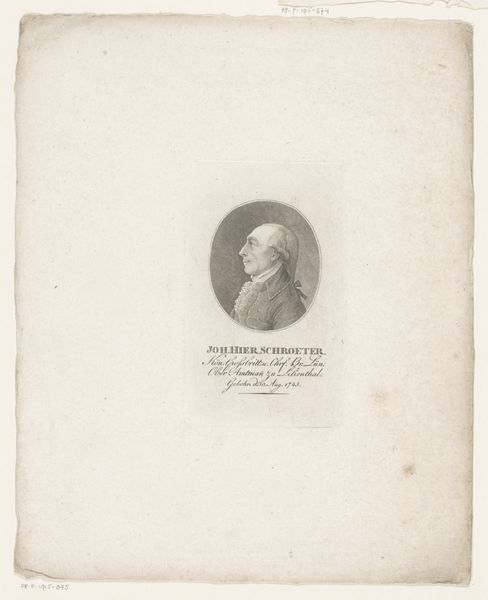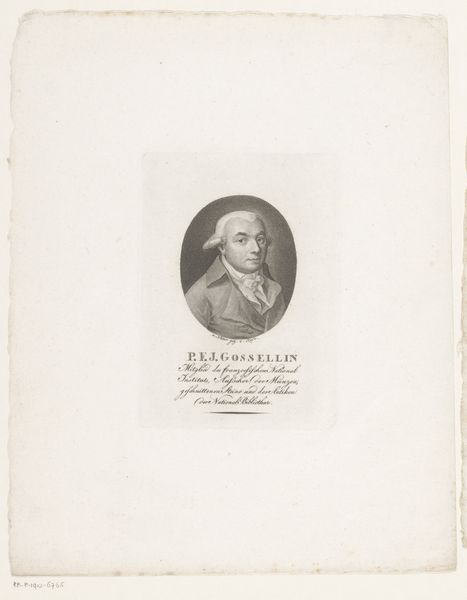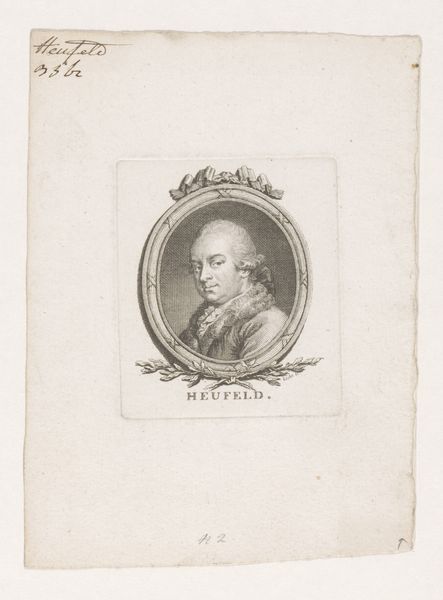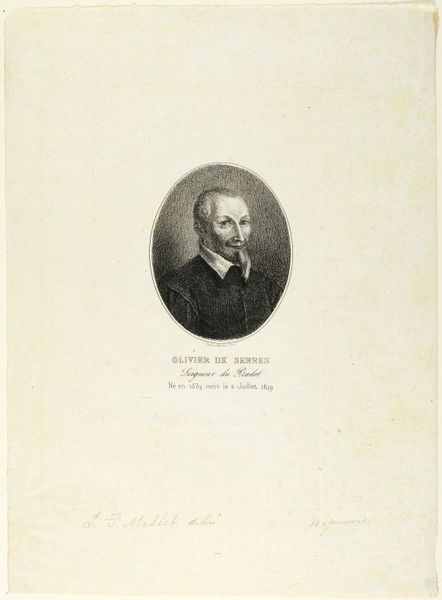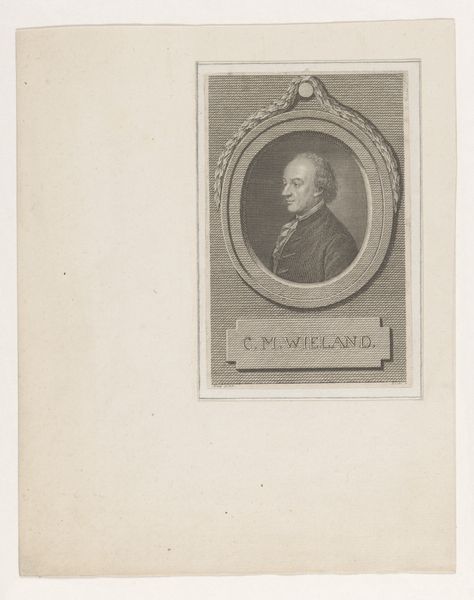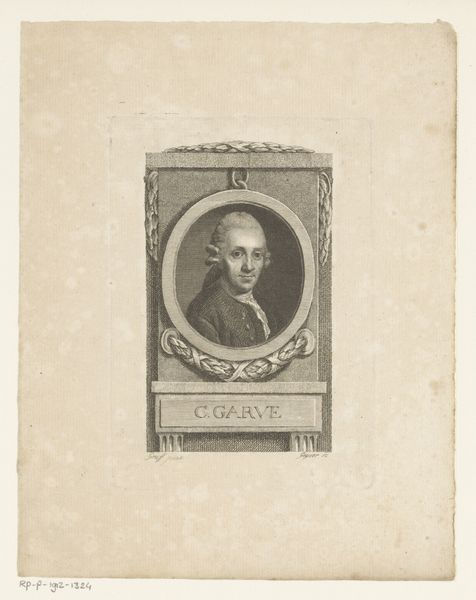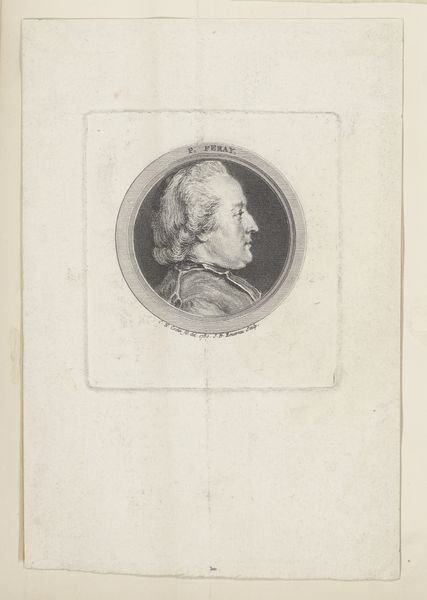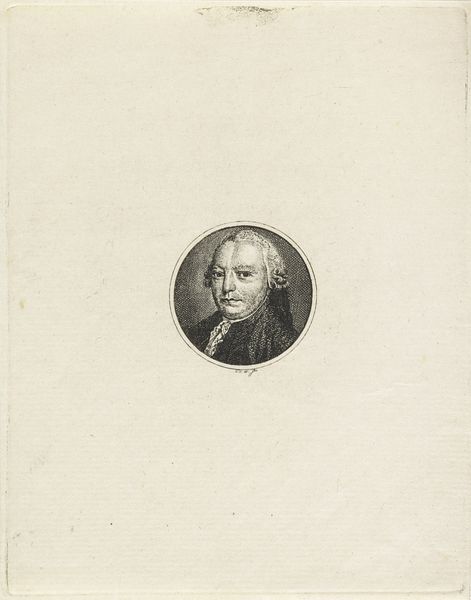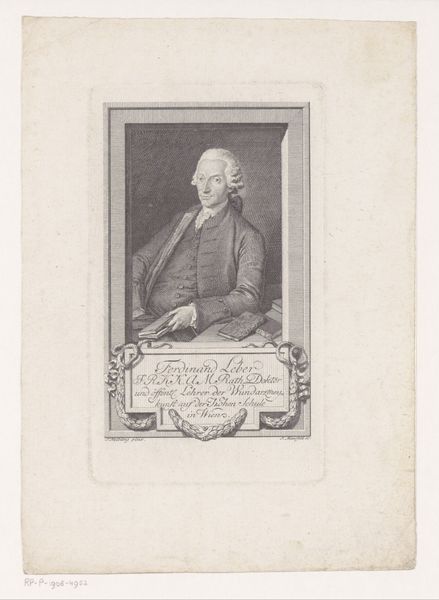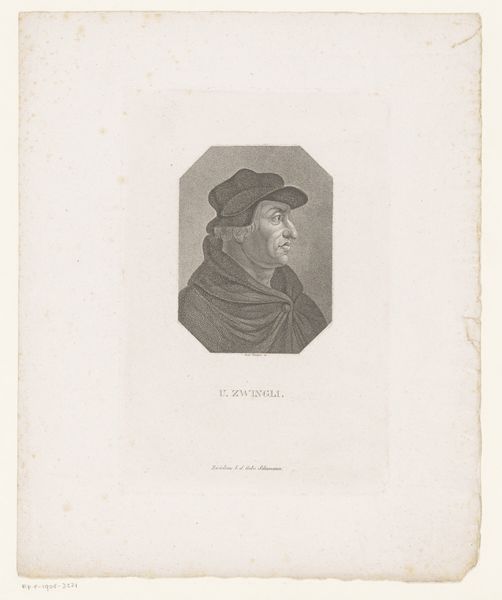
engraving
#
portrait
#
neoclacissism
#
aged paper
#
toned paper
#
light pencil work
#
old engraving style
#
personal sketchbook
#
sketchbook drawing
#
academic-art
#
engraving
Dimensions: height 120 mm, width 85 mm
Copyright: Rijks Museum: Open Domain
Curator: The first thing I notice about this engraving, "Portret van Johann Ludwig Christ," likely made between 1776 and 1824, is the rather serious expression of the sitter. It feels very contained, very… proper. Editor: Indeed. It presents Johann Ludwig Christ, chaplain of Neuenberg, with a distinct Neoclassical sensibility. I see this choice of medium, engraving, as very deliberate. Curator: Absolutely! There’s an emphasis on line and form—academic, as the museum describes it—that reminds me of those very crisp, almost surgically precise portraits one sees from this era. Though, is it just me, or is there something ever-so-slightly unfinished about it? Editor: That slightly unfinished air is actually something quite intriguing, I think. The bare aged paper, the relative sketchiness in some areas—it creates a compelling contrast with the formality expected of portraiture in the period. I mean, who was he and why do we immortalize him? Curator: I wonder, was this destined to be part of a personal sketchbook, or perhaps preparatory work? The level of detail varies, it looks like they did a beautiful rendition of his coat and hair but was losing interest toward the empty space on the paper. Editor: Yes, it hints at the broader societal context, a moment where reason and enlightenment ideals were ascendant, particularly among the educated bourgeoisie and clergy. But let's not forget that Christ was more than a chaplain. Curator: Right! He was also a pomologist! An expert in fruit cultivation! Knowing that gives the portrait a delightful twist, doesn’t it? It suddenly feels less stiff and more… earthbound. A connection with the physical, natural world. Editor: Exactly! The way we present figures like Christ speaks volumes about who gets remembered and why. Perhaps future exhibitions should recontextualize historical portraiture like this, highlighting those who were on the margins of elite circles or pursued more unconventional avenues. Curator: It would also be fascinating to contrast this image with the Romantic movement slowly emerging at the time. Here's someone deeply entrenched in the rational and intellectual side of things—quite interesting to think about what else may have come out from his drawing practice or sketchbook, beyond his professional works. Editor: So true, understanding this work invites us to reflect critically on whose stories are privileged in the archives of art history. Thanks for offering a peek into how we might make those voices less silenced!
Comments
No comments
Be the first to comment and join the conversation on the ultimate creative platform.


